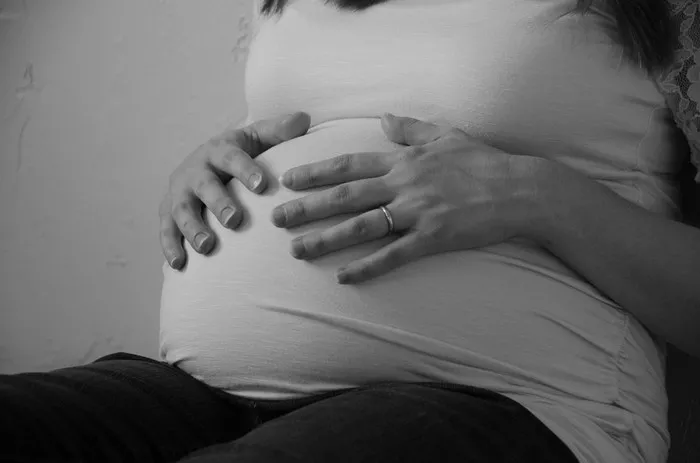Rasoli in the uterus, also known as uterine fibroids, are non-cancerous growths that develop in the muscle wall of the uterus. These growths can vary in size from small, undetectable lumps to large masses that cause significant symptoms. While they are common, they can lead to various health issues if left untreated, including heavy menstrual bleeding, pelvic pain, and in some cases, fertility problems. In this article, we will explore how to treat rasoli in the uterus, the different treatment options available, and factors to consider when deciding on the best approach for you.
What Are Rasoli (Fibroids)?
Rasoli, or fibroids, are made of muscle and fibrous tissue and are typically benign. They are often discovered during routine pelvic exams or imaging tests like ultrasounds. While fibroids are not usually life-threatening, their presence can affect a woman’s quality of life, especially if they are large or located in certain areas of the uterus.
Fibroids can vary in size and location. They may develop on the inner lining of the uterus, within the uterine wall, or on the outer surface of the uterus. The size and position of the fibroids, along with the severity of symptoms, determine the treatment approach.
Symptoms of Rasoli in the Uterus
Not all women with fibroids experience symptoms. In fact, many women with small fibroids may never know they have them. However, when symptoms do occur, they may include:
Heavy or prolonged menstrual bleeding: This is one of the most common symptoms of fibroids. Women may experience menstrual periods that last longer than normal and excessive bleeding.
Pelvic pain or pressure: Large fibroids can put pressure on the bladder or other nearby organs, causing pelvic discomfort or pain.
Frequent urination: If a fibroid presses against the bladder, it can result in the frequent need to urinate.
Pain during intercourse: Fibroids that grow near the cervix or the vagina can cause discomfort during sexual activity.
Difficulty getting pregnant: Although fibroids are not a direct cause of infertility, they can interfere with the implantation of an embryo or cause complications during pregnancy.
If any of these symptoms are present, it is important to consult a gynecologist to determine whether fibroids are the cause and explore potential treatment options.
How to Diagnose Rasoli in Uterus
To diagnose rasoli, or uterine fibroids, your gynecologist will likely begin with a detailed medical history and a pelvic examination. If fibroids are suspected, several diagnostic tests may be recommended:
1. Ultrasound
An ultrasound is a non-invasive imaging test that uses sound waves to create an image of the inside of the uterus. This is the most common method used to detect fibroids.
2. Magnetic Resonance Imaging (MRI)
An MRI provides a more detailed image of the uterus and is often used to assess the size, location, and number of fibroids.
3. Hysteroscopy
A hysteroscopy is a procedure in which a small camera is inserted into the uterus through the cervix. This allows the gynecologist to view the inside of the uterus and detect any abnormalities like fibroids.
4. Sonohysterogram
This is a specialized ultrasound that involves injecting a sterile fluid into the uterus to improve the clarity of the ultrasound images and help detect fibroids.
Treatment Options for Rasoli in Uterus
The treatment for fibroids depends on factors such as the size, location, and number of fibroids, as well as the severity of symptoms. There are several treatment options, ranging from medications to surgery. Below, we explore each treatment option in more detail.
1. Medication
In some cases, medications can help manage the symptoms of fibroids without the need for surgery. These treatments aim to regulate the hormones that cause fibroids to grow and reduce symptoms like heavy bleeding.
Hormonal Therapy
Hormonal treatments can be used to shrink fibroids by reducing estrogen levels. Options include birth control pills, hormonal IUDs, and injectable medications. These treatments help control heavy bleeding and may reduce pelvic pain.
Gonadotropin-Releasing Hormone (GnRH) Agonists
GnRH agonists work by suppressing estrogen production, which causes the fibroids to shrink temporarily. These medications are often used before surgery to reduce the size of fibroids and make the procedure less invasive. However, long-term use is not recommended due to potential side effects like bone thinning.
Nonsteroidal Anti-inflammatory Drugs (NSAIDs)
Over-the-counter pain relievers like ibuprofen can help manage pain and reduce inflammation caused by fibroids. While NSAIDs don’t shrink the fibroids, they can help alleviate discomfort associated with them.
2. Minimally Invasive Procedures
For women who want to avoid traditional surgery but still need effective treatment, there are several minimally invasive options. These procedures can be performed without the need for large incisions, leading to quicker recovery times.
Uterine Artery Embolization (UAE)
Uterine artery embolization is a procedure in which the blood vessels that supply blood to the fibroids are blocked. This deprives the fibroids of oxygen and nutrients, causing them to shrink over time. UAE is effective for many women, but it may not be suitable for all types of fibroids.
MRI-guided Focused Ultrasound (MRgFUS)
MRgFUS is a non-invasive treatment that uses high-frequency sound waves to target and destroy fibroid tissue. The procedure is guided by an MRI to ensure precise targeting. This treatment can reduce the size of fibroids and alleviate symptoms.
Endometrial Ablation
Endometrial ablation involves the removal or destruction of the uterine lining, which can help reduce heavy bleeding caused by fibroids. This procedure is usually recommended for women who do not plan to have children in the future.
3. Surgical Options
In cases where fibroids are large, numerous, or causing significant symptoms, surgery may be necessary. There are several surgical options available, depending on the severity of the fibroids and the patient’s reproductive plans.
Myomectomy
A myomectomy is a surgical procedure in which fibroids are removed from the uterus while preserving the uterus itself. This option is often recommended for women who wish to maintain their fertility. The procedure can be performed through an abdominal incision, laparoscopically (using small incisions), or via hysteroscopy (through the cervix).
Hysterectomy
A hysterectomy is the removal of the entire uterus. This is typically recommended for women who have completed their family or those whose fibroids are causing severe complications. While this procedure is highly effective, it results in infertility, as the uterus is permanently removed.
4. Lifestyle Changes
While lifestyle changes alone cannot treat fibroids, they can help manage symptoms. Maintaining a healthy diet, managing stress, and exercising regularly can help balance hormones and improve overall health. Some women find relief from mild fibroid symptoms by adopting these healthy habits.
When Should You Seek Treatment?
If you experience any of the following symptoms, it is important to consult a gynecologist for a thorough evaluation and diagnosis:
- Heavy menstrual bleeding that lasts longer than usual
- Pelvic pain or pressure
- Frequent urination or difficulty emptying the bladder
- Painful intercourse
- Abdominal bloating or discomfort
- Difficulty getting pregnant
Treatment is typically recommended if fibroids cause significant symptoms or interfere with a woman’s quality of life. In cases where fibroids are small and do not cause symptoms, close monitoring may be sufficient.
Conclusion
Rasoli in the uterus, or fibroids, are common benign growths that can affect a woman’s reproductive health. Fortunately, there are various treatment options available, ranging from medications and minimally invasive procedures to more extensive surgeries like myomectomy or hysterectomy. The choice of treatment depends on factors such as the size, location, and number of fibroids, as well as the woman’s overall health and reproductive goals. If you are experiencing symptoms of fibroids, it is essential to consult a gynecologist to discuss the most appropriate treatment plan tailored to your needs.
Related topics:
What Happens When Your Uterus Shrinks?

























